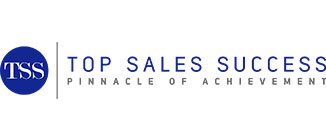In every industry, the most dangerous competitor is not the one you can see—it is the one you don’t expect. Complacency creates blind spots, and those blind spots invite disruption. This is why high-performing organizations must learn to view their business through a different lens: the eyes of their fiercest competitor.
Market leaders often underestimate how aggressively a challenger would target their customers. They assume loyalty is permanent, processes are sufficient, and their value proposition remains superior. Yet history shows the opposite. Disruptors win when established companies stop scrutinizing their own vulnerabilities. Sears, Kodak, Nokia, and Blockbuster all had opportunities to reinvent themselves—but confidence in the status quo dulled their urgency.
The most resilient companies embrace a different mindset. They deliberately cannibalize their own products, processes, and revenue models before someone else does. Apple launched the iPhone knowing it would kill the iPod. Netflix moved into streaming knowing it would destroy its DVD business. Amazon repeatedly reinvents its own logistics, pricing, and service models. These organizations understand a critical truth: you must be willing to disrupt yourself while you are strong—not after a competitor forces your hand.
To adopt this mindset, leaders should regularly ask:
- If I were my toughest competitor, how would I attack my customers?
- Which part of my business is easiest to steal?
- What would I launch tomorrow that could render my current model obsolete?
- What change am I avoiding because today feels “good enough”?
This approach is not pessimistic, but it is strategic. It transforms internal comfort into external awareness and forces innovation before necessity demands it.
Complacency is defeated through intentional reinvention. The question for every leader is simple: Are you actively disrupting your business, or waiting for a competitor to disrupt it for you?
Workshop: Outsmarting Complacency — Becoming Your Toughest Competitor
Workshop Objective
Equip leaders and teams to proactively challenge their own assumptions, pressure-test their strategy, and reinvent vulnerable areas of the business before competitors do. Participants will analyze their business from the perspective of a disruptor and create actionable plans to strengthen competitive positioning.
- Opening (5 minutes)
Facilitator Framing:
Introduce the core idea:
- “If you don’t attack your business model, a competitor eventually will.”
- Reinforce the connection to complacency and hidden vulnerabilities.
Prompt:
“When was the last time you looked at your business with the harshness of a competitor?”
- Mini-Lesson: Why Self-Disruption Matters (10 minutes)
Topics to cover:
- The danger of complacency during good times
- Why competitors target your weak spots first
- Examples: Apple cannibalizing the iPod, Netflix pivoting from DVDs, Amazon reinventing its own logistics
- The psychology of internal comfort vs. external threat
Discussion:
“What parts of your business have gone unquestioned for too long?”
- Competitive Attack Mapping Exercise (20 minutes)
Participants map how a competitor would attempt to steal their customers.
Step 1 – Identify Vulnerabilities
Prompts:
- Where are you slow?
- Where are customers frustrated?
- What would a cheaper, faster, or more innovative competitor exploit?
Step 2 – Competitor Attack Blueprint
Participants outline:
- The offer a competitor would launch
- The messaging they’d use
- The pricing strategy
- The channels they’d target
- The weaknesses they’d exploit
Group Share-Out: Identify common patterns.
- Cannibalization Strategy Workshop (15 minutes)
Teach participants the principle:
“If anyone is going to disrupt you, it should be you.”
Activities:
- Identify one product, service, or process that should be reinvented—even if it temporarily reduces revenue.
- Brainstorm “Version 2.0” of a core offering.
- Challenge the group: “If a startup launched today, how would they build this without your legacy constraints?”
- Competitor Simulation Breakout (15 minutes)
Break the room into teams.
Each team becomes a direct competitor.
They must design a business whose sole purpose is to take market share from the participant’s company.
Teams answer:
- What customer segment will we steal first?
- What will we say about the participant’s company?
- What weaknesses will we highlight?
- What disruptive offer will we launch?
Teams present to the group.
This often exposes more truth than internal assessments.
- Anti-Complacency Action Plan (10–15 minutes)
Using your Strategic Success Navigator format, participants complete a simple plan:
- Objective: Eliminate identified vulnerabilities
- Strategies: How to counter competitor attacks
- Tactics: Actions within 30–60 days
- KPIs: What will be monitored
- Owner: Who is accountable
- Leadership Commitment & Closing (5 minutes)
Final message:
Complacency dies when leaders adopt a competitor’s mindset and continuously reinvent their own business.
Final Call to Action Question:
“What will you disrupt, improve, or reinvent in the next seven days—before a competitor does it for you?”
Tony Picciano, founder of
TOP SALES SUCCESS GROUP LLC
WWW.TOPSALESSUCCESS.COM
440-497-0335 – Or – 419-350-4008


